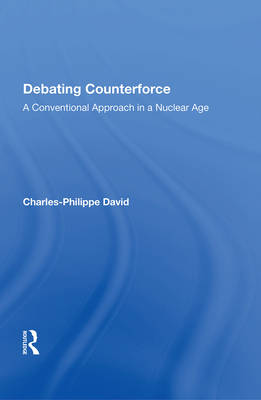
- Afhalen na 1 uur in een winkel met voorraad
- Gratis thuislevering in België vanaf € 30
- Ruim aanbod met 7 miljoen producten
- Afhalen na 1 uur in een winkel met voorraad
- Gratis thuislevering in België vanaf € 30
- Ruim aanbod met 7 miljoen producten
Zoeken
Debating Counterforce
A Conventional Approach in a Nuclear Age
Charles-Philippe David
Hardcover | Engels
€ 182,45
+ 364 punten
Uitvoering
Omschrijving
Since the U.S. presidential elections of 1980, debate has intensified between those who believe that nuclear weapons can only deter a war not intended to be fought and those who see nuclear weapons as an advancement in weaponry that allows for the waging and winning of a nuclear war. At the focal point of this debate is the rise of the "counterforce" doctrine-the concept of a nuclear attack exclusively against the enemy's military forces. The author, in outlining the unresolved tension between the two approaches, examines the reasons counterforce has become widely accepted in U.S. nuclear weapons policies. He argues that many strategists are worried that the counterforce strategy is out of touch with the reality of the nuclear world and see it as merely a "technical fix" for a dilemma that may have no solution. Finally, Dr. David discusses the implications of adherence to the counterforce doctrine despite increasing popular support for avoiding nuclear war through deterrence and arms control.
Specificaties
Betrokkenen
- Auteur(s):
- Uitgeverij:
Inhoud
- Aantal bladzijden:
- 276
- Taal:
- Engels
Eigenschappen
- Productcode (EAN):
- 9780367013608
- Verschijningsdatum:
- 23/05/2019
- Uitvoering:
- Hardcover
- Formaat:
- Genaaid
- Afmetingen:
- 152 mm x 224 mm
- Gewicht:
- 671 g

Alleen bij Standaard Boekhandel
+ 364 punten op je klantenkaart van Standaard Boekhandel
Beoordelingen
We publiceren alleen reviews die voldoen aan de voorwaarden voor reviews. Bekijk onze voorwaarden voor reviews.











